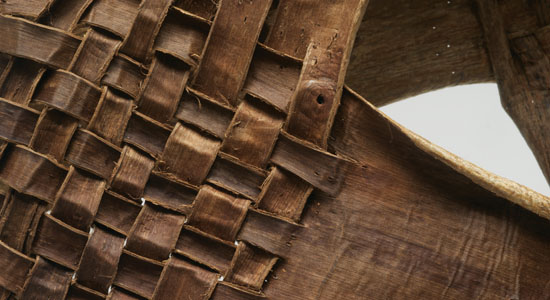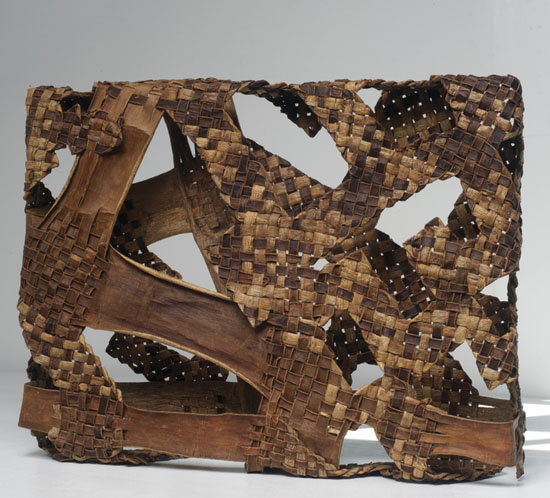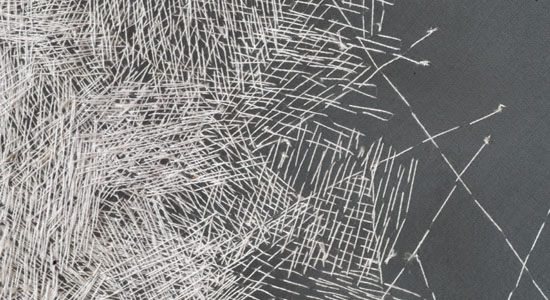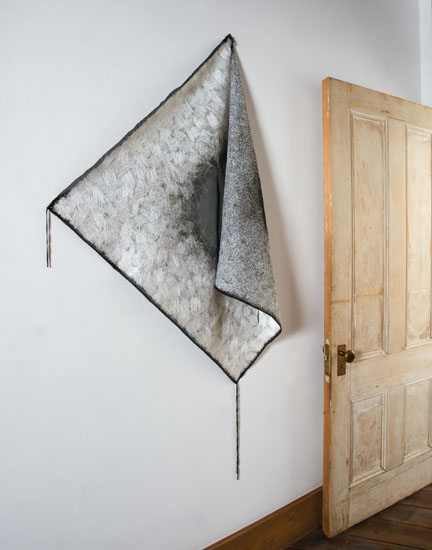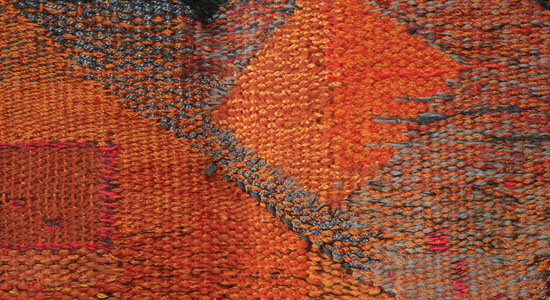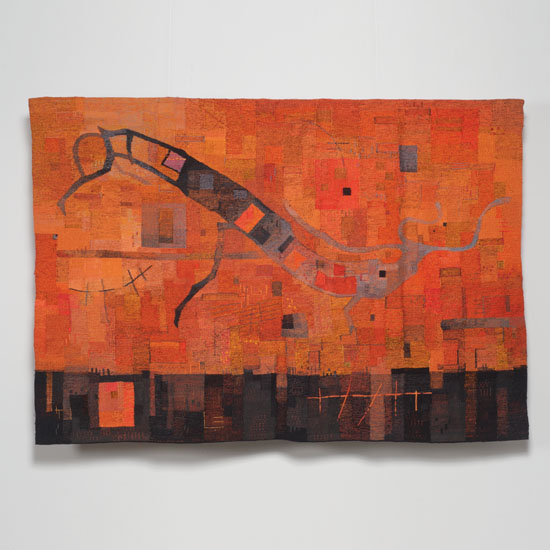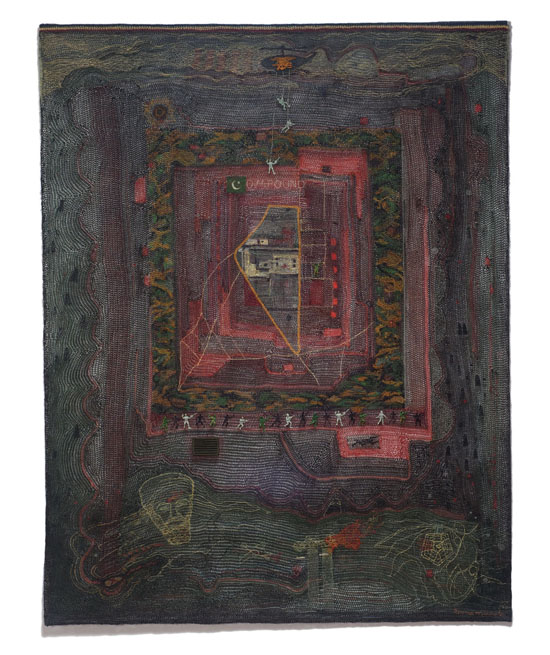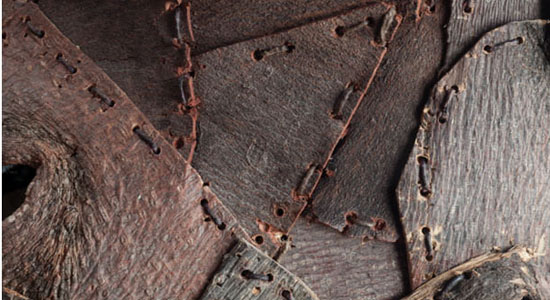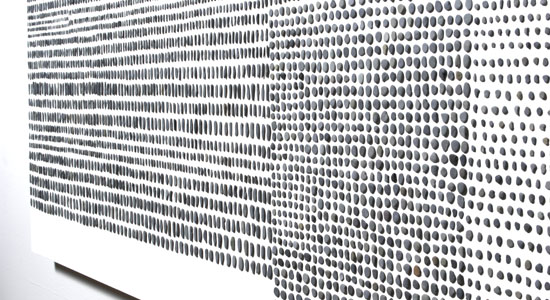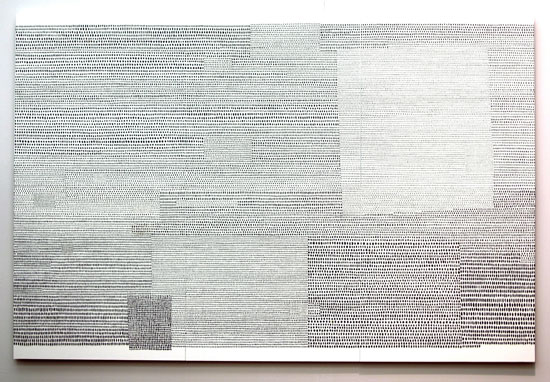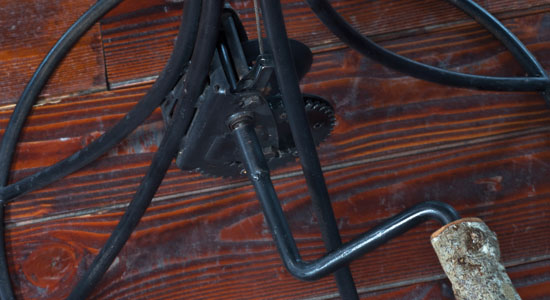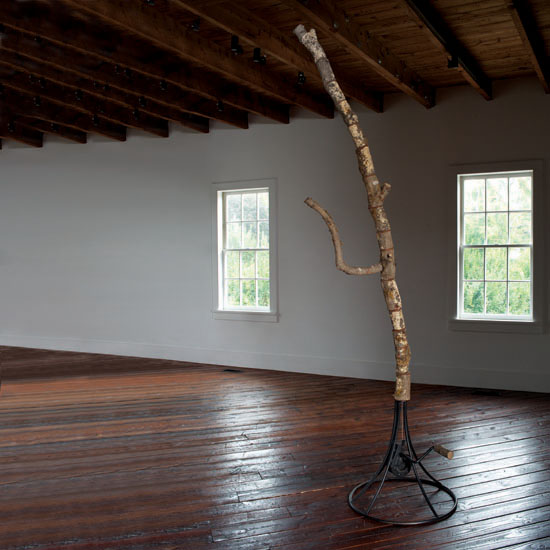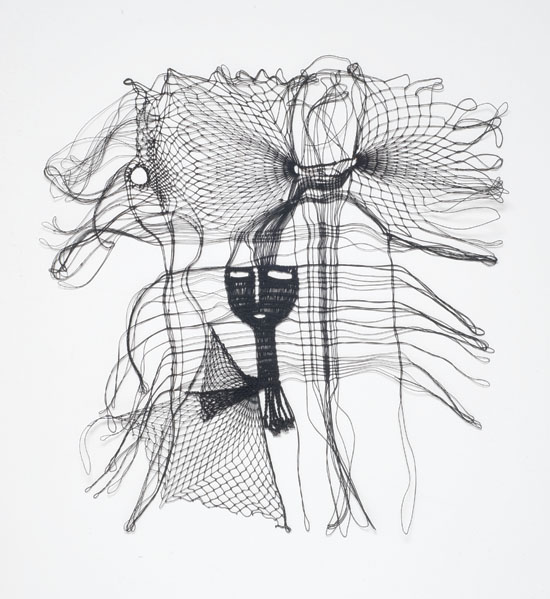At SOFA NY browngrotta arts will present two dramatic works of jute by Japanese artist Naoko Serino. “Jute is attractive as it is, transient but also solid,” explains Serino. “Transforming jute into a fibrous material, I feel that the possibilities of expression have opened up and been induced, and eventually a three-dimensional expression is born, containing both light and air.” In creating Generating-3, which will be displayed at SOFA New York, Serino was inspired by a Philodendron selloum bud and flower that she tended for 22 years before it bloomed, for just one day. Serino was taken by its strength and beauty.
Generating-4, a standalone sculpture of jute that is more than three feet high will also be displayed at SOFA NY. “When my inner memory is stimulated,” Serino says, “I turn the fundamental illusion into a ‘shape’ and I am able to enjoy interacting with shapes far beyond my imagination.” Serino’s’s work was included in the Fiber Futures: Japan’s Textile Pioneers exhibition which traveled from Japan to the Japan Society in New York last year. her work has also appeared in the Museum Rijswijk, Haag, the Netherlands; Kajima Ki Building, Tokyo, Japan; Church of San Francesco, Como, Italy; Musée des Beaux Arts, Tournai, Belgium; Gwangju Art Museum,Korea; Academy of Arts & Design, Tsinghua University, Beijing, China; Fukuoka Asian Art Museum, Japan; Urasoe Museum, Okinawa, Japan; and St. Amandsberg Chapel, Ghent, Belgium.



